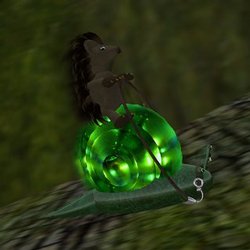Difference between revisions of "Snail Rallying"
(→Pace Notes: mod straight to number only) |
(→Courses: added the proposed planned courses) |
||
| Line 73: | Line 73: | ||
==Courses== | ==Courses== | ||
| − | + | The following are the course that have been identified. A good course has a range of altitude change, direction changes and excellent scenery. The course should generally always be on a marked pathway or roadway. | |
| + | Ideally at least one of the start finish points should be on or near a sim boundary since this allows for easier stacking of competitors on the neighboring sim. | ||
| + | |||
| + | * Abalus Beach Tour | ||
| + | * Hatchie Haven Pirates Cove | ||
| + | * [[Snail Rallying Course 1|Tir Infernis Snail Valley]] | ||
[[Category:Isle Activities]] | [[Category:Isle Activities]] | ||
Revision as of 11:42, 1 August 2008
Contents |
About
In a previously peaceful valley the ground trembles and the trees shake. It isn't a monster that causes this, but a racing snail sitting on the start line waiting to launch on a full-blast rally run.
Snail Rallying is where snails and there riders gather to complete a course in the fastest time trying to beat both the course and then their competition (as opposed to circuit racing, where you beat your competition first and course second).
There are several routes suitable for snail rallying in the Isle of Wyrms. This guide details these are provides information on how to go racing.
Rules & Regulations
- Each snail will be released one at a time, when the previous snail completes the course, the next snail can be released (there should not be two on the course at the same time).
- The course is run once in each direction for a complete set of times.
- The fastest time is determined from the aggregate of the two times.
- Short-cuts are not permitted (however, clipping the apex of a corner is).
- Salting the track is not permitted
Classes
The snails are categorised into the following classes for the purposes of racing:
Group N: A standard out of the box riding snail, completely unmodified
Group A: A riding snail that is generally identical for a standard snail, but may have minor changes to body including changed textures, added and removed prims.
Group B: A fire breathing, nitro injected, anything goes snail.
Pace Notes
In normal rallying, the driver has a co-driver who reads pace notes describing the course ahead and is responsible for timekeeping. The racing snails, as attachments, only have room for one person so therefore the co-driver can't actively sit with the driver.
However, to get the complete experience, the following are suggested options:
- Have a friend in the room with you shouting the pace notes as you go down the track
- Have a friend linked via a private voice shouting the pace notes at you (don't do this on public voice please)
Pace notes are very specific to the driver and there driving style. Standard pace notes are supplied for each course, but each individual driver may want to go on a recce and add extra detail or modify a note for their personal style.
In the supplied pace notes, the following table describes the symbols used:
Courses
The following are the course that have been identified. A good course has a range of altitude change, direction changes and excellent scenery. The course should generally always be on a marked pathway or roadway.
Ideally at least one of the start finish points should be on or near a sim boundary since this allows for easier stacking of competitors on the neighboring sim.
- Abalus Beach Tour
- Hatchie Haven Pirates Cove
- Tir Infernis Snail Valley









